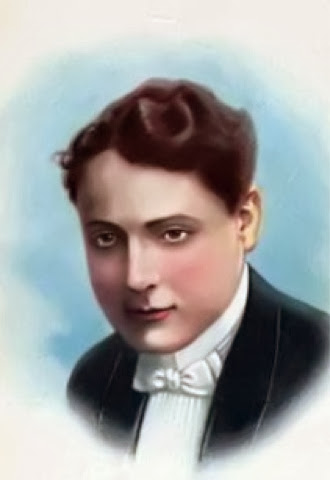Saturday, November 30, 2013
"The Tales of Hershel Summerwind" by Itzik Manger. 1935
A story by Bob created at the Anjali House Writing Project
Friday, November 29, 2013
Stefan Zweig - two short stories - "The Invisible Collection" (1925) and "Forgotten Dreams" (1927)
Memoirs of an Anti-Semite by Gregor von Rezzori amazing work of art.
Thursday, November 28, 2013
Anjali House Writing Workshop in Siem Reap, Cambodia - My introduction to many great stories and poems
"Master" by Angela Carter 1995
Stories by Young People from the Anjali House Writing Workshop in Siem Reap, Cambodia -directed by Sue Guiney
Sue’s life has taken her from a childhood in New York, to student life in Connecticut and Boston, to adulthood in London where she still lives with her husband. Her two grown sons are now off on their own journeys. Her work reflects her travels with much of it now focused in Cambodia, both as a writer and teacher.
Sue has founded a Writing Workshop for street children at the shelter Anjali House in Siem Reap, Cambodia, where she teaches for a portion of each year.
end of guest post.
I am honored to be able to share with my readers some of the wonderful stories that came out of Sue's Workshop.
I will shortly attempt my own introductory post in which I try to relate this to the themes of my blog.
I expect this event to last from three weeks to a month. There will be brief autobiographies of the authors. In order to protect the privacy of the writers, all will be given pen names.
I am very proud to be presenting these stories and poems.
"The Legend of the Holy Drinker" by Joseph Roth 1939 - Roth's Final Fiction
Wednesday, November 27, 2013
The Assassination of the Archduke: Sarajevo 1914 and the Romance That Changed the World- by Greg King with Sue Woolmans, St. Martin's Press, 2013
Tuesday, November 26, 2013
Highway to Hell by Matt Roper 2013 (nonfiction)
The Leviathan by Joseph Roth -1940- translated by Michael Hoffman in 2011)
Journey to the East by Hermann Hesse 1932 - Orientalizing and Hesse
Monday, November 25, 2013
I Was Jack Mortimer by Alexander Lernet-Holena 1933
Lernet-Holenia participated in the Invasion of Poland as a reactivated and drafted lieutenant of the reserve, an experience on which he based his 1941 novel Die Blaue Stunde (The Blue Hour) which after the war became known under the title Mars im Widder (Mars in Aries). It has been called "the only Austrian resistance novel" because the plot features an ideologically troubled central character, hints at the existence of active political opposition, and because the Nazi government banned and quarantined the first edition of the book.
Although Lernet-Holenia made himself a lucrative business as a popular screenplay writer during the Third Reich, he was one of the few accomplished Austrian authors who kept his distance from National Socialism, and refused to endorse the Nazi political system or to participate in its notorious blood and soil literary efforts. However, to stay in business he had to make arrangements with the regime, which included becoming chief dramaturgist at the "Heers-Filmstelle" (the audiovisual media center of the Wehrmacht in Berlin, charged with producing propaganda films for military cinemas) after the Polish campaign. Robert Dassanowsky has stated that "[Lernet-Holenia's] early actions in the Reich were confused, appearing to vacillate between naiveté and the often clumsy, often shrewd acts of a survivalist ... a unique but not incomprehensible position." Lernet-Holenia became more outspoken as the war progressed. After his removal from his public position in 1944 he escaped service on the Eastern combat theatre through contrived illness and the help of the resistance network.
Featured Post
Fossil Men: The Quest for the Oldest Skeletons and the Origins of Humankind by Kermit Pattison. - 2020 - 534 pages- Narrative Nonfiction
Fossil Men: The Quest for the Oldest Skeletons and the Origins of Humankind by Kermit Pattison. - 2020- 534 pages- Narrative Nonfiction Fos...

-
Nothing Can Destroy the Faith and Strength of the people of the Philippines - Mel u, Quezon City and Candelaria, November 10, 2013- commen...
-
My Posts on the literature and history of the Philippines Francisco Arcellana (1916 to 2002) was a highly regarded poet, essayist, crit...
-
"The Ring" by Byron MacMahon (1976, 4 pages) The Irish Quarter A Celebration of the Irish Short Story March 11 to ? ...











































